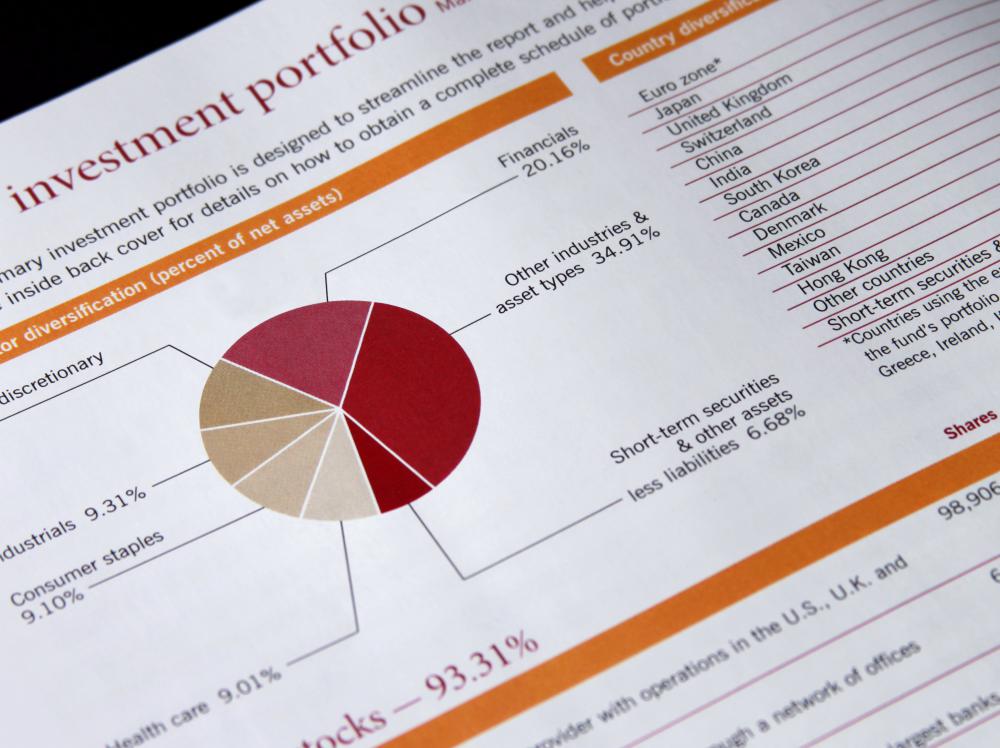At WiseGEEK, we're committed to delivering accurate, trustworthy information. Our expert-authored content is rigorously fact-checked and sourced from credible authorities. Discover how we uphold the highest standards in providing you with reliable knowledge.
What is Modern Portfolio Theory?
Modern portfolio theory, or MPT, is an attempt to optimize the risk-reward of investment portfolios. Created by Harry Markowitz, who earned a Nobel Prize in Economics for the theory, modern portfolio theory introduced the idea of diversification as a tool to lower the risk of the entire portfolio without giving up high returns.
The key concept in modern portfolio theory is Beta. Beta is a measure of how much a financial instrument, such as a stock, changes in price relative to its market. This is also referred to as its variance. For instance, a stock that moves 2%, on average, when the S&P 500 moves 1%, would have a Beta of 2. Conversely, a stock that, on average, moves in the opposite direction of the market would have a negative Beta. In a broad sense, Beta is a measure of investment riskiness; the higher the absolute value of Beta, the riskier the investment.

Modern portfolio theory constructs portfolios by mixing stocks with different positive and negative Betas to produce a portfolio with minimal Beta for the group of stocks taken as a whole. What makes this attractive, at least theoretically, is that returns do not cancel each other out, but rather accumulate. For example, ten stock, each expected to earn 5% but risky on their own, can potentially be combined into a portfolio with very little risk which preserves the 5% expected return.

Modern portfolio theory uses the Capital Asset Pricing Model, or CAPM, to select investments for a portfolio. Using Beta and the concept of the risk-free return (e.g., short-term US Treasuries), CAPM is used to calculate a theoretical price for a potential investment. If the investment is selling for less than that price, it is a candidate for inclusion in the portfolio.
While impressive theoretically, modern portfolio theory has drawn severe criticism from many quarters. The principle objection is with the concept of Beta; while it is possible to measure the historical Beta for an investment, it is not possible to know what its Beta will be going forward. Without that knowledge, it is in fact impossible to build a theoretically perfect portfolio. This objection has been strengthened by numerous studies showing that portfolios constructed according to the theory don't have lower risks than other types of portfolios.
Modern portfolio theory also assumes it is possible to select investments whose performance is independent of other investments in the portfolio. Market historians have shown that there are no such instruments; in times of market stress, seemingly independent investments do, in fact, act as if they are related.
AS FEATURED ON:
AS FEATURED ON:












Discuss this Article
Post your comments